The
Tip of Your Nose:
The degree of rotation of the tip is probably the most common concern to
Dr. Torkian's nose job patients. A number of "maneuvers" can be used during
rhinoplasty to affect the angle between the tip (and/or columella) and
the upper lip. As a general rule this angle should be around 90?
in males and 95-105? in females. Below are examples of increased
rotation (increased nasolabial angle).
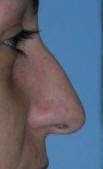
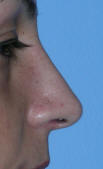
Decrease in the nasolabial angle is rarely necessary in nose jobs or
revision rhinoplasty, but can be
achieved with a series of grafts to lengthen the central support of the
tip.
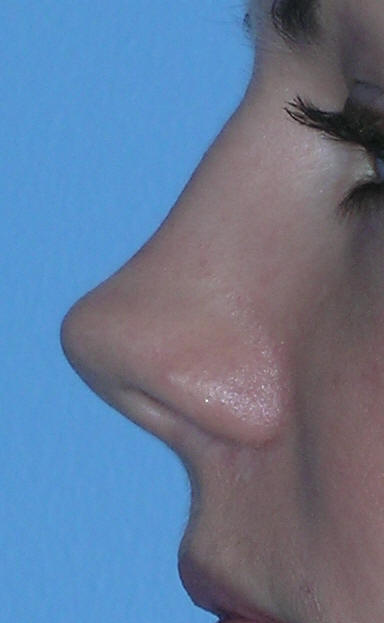
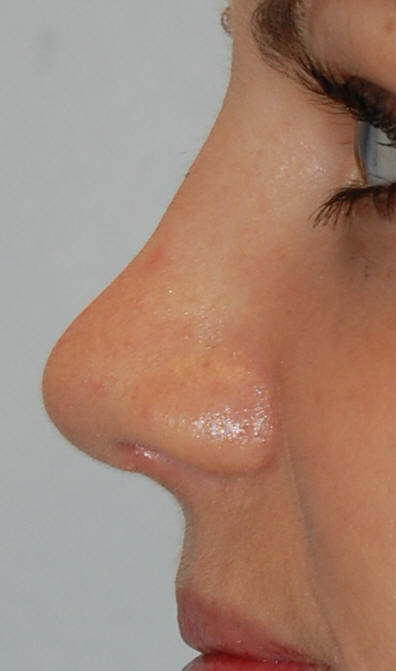
Narrowing
of the tip is a common request amongst rhinoplasty patients. It is
generally achieved with a combination of cartilage trimming, and
internal stitches (sutures) used to reshape the tip cartilages.
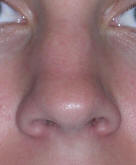
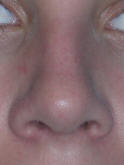
Other changes to the tip often involve correction of contour, sharp or
harsh edges, and frequently a change in the projection of the
tip. Tip projection has been defined in several ways often in
relation to other landmark features of the face or nose, but simply
stated it is the amount to which the tip of the nose comes forward.
Most patients require reduction of the tip projection, while few require
increased projection as in the examples below.
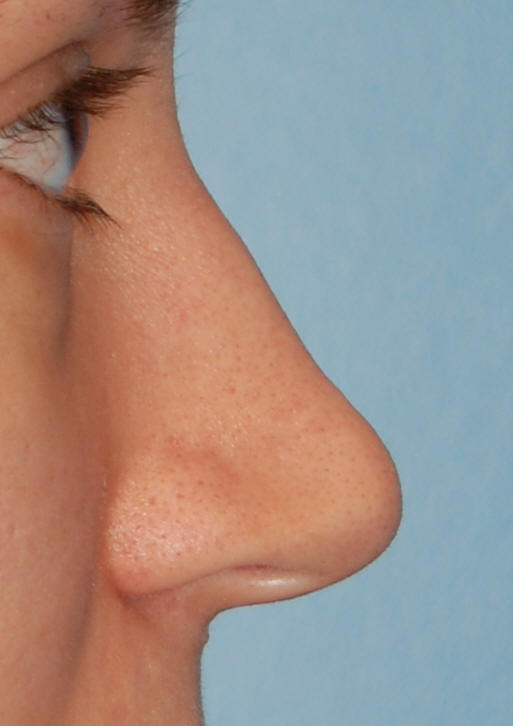
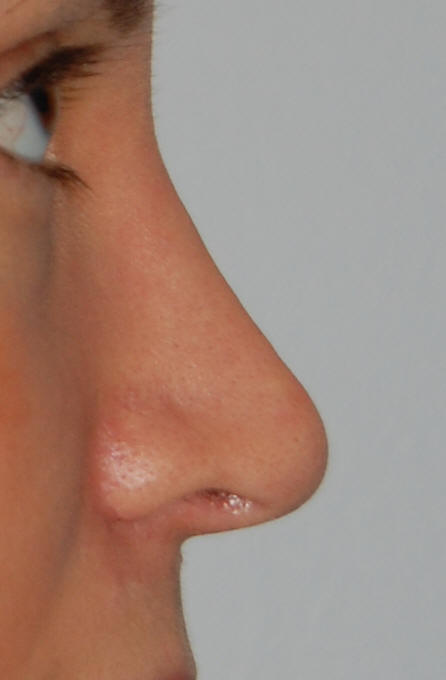
Example of decreased nasal tip projection.

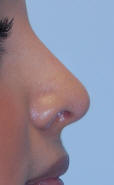
Example of increased nasal tip projection.
The Nasal Bridge (Dorsum):
The bridge of the nose is the most common part of the nose that is
altered during a Rhinoplasty surgery. Many patients with Eastern
European, or Middle Eastern background have a large "hump" that is
commonly considered outside of the "norm" by today's aesthetic
standards. The most common request is reduction of the dorsum.
Reduction of the dorsum is a very delicate and critical portion of any
rhinoplasty surgery since over- or under- reduction can lead to
dissatisfaction and otherwise unnecessary revision rhinoplasty surgery.
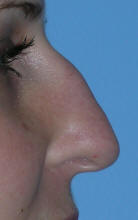
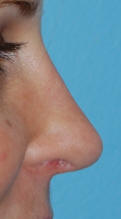
Example of Dorsal hump reduction nose surgery.
Less commonly the appearance of the nose would appear more harmonious
with the addition of "strength" to the bridge. Dorsum Augmentation
is most commonly necessary in men, and ethnic (African or Asian) noses.
The safest material to use for addition to the dorsum is the patient's
own cartilage. Common sources for this cartilage are the nasal
septum, the ear, and the ribs. Dr. Torkian's preference is the
septum, and in cases where the septum does not have sufficient
cartilage, ear cartilage, and fascia from the muscles in the temporal
area are preferred. Alloplastic (synthetic) materials include
silicone, Gore-Tex, Medpor and others, and are often more prone to
infection, displacement, and problems that may require other surgery to
correct.
Occasionally, Radiesse (a bio-synthetic filler) may be injected into the
bridge of the nose for minimal corrections to add to the bridge.
This can be done in the office with local numbing injections.
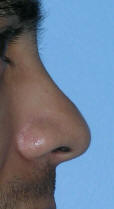
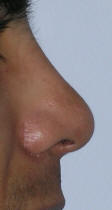
Example of Dorsum Augmentation using cartilage from the septum.
Nostril (Alar Base) Reduction:
In some patients, an excessively wide Alar Base (width of nostril edges
from each other) necessitates reduction of the size of the nostrils.
Occasionally when the tip of the nose is pushed back, the "flare" or
apparent width of the nostrils increases, also necessitating reduction
in the nostril size. This is usually done with external incisions
in the groove between the nostril and cheek skin. Occasionally the
width can be reduced through small internal incisions to a very small
degree when more aggressive reduction is not necessary. In
some patients, Alar Base reduction is preformed as a separate adjunctive
procedure in the office, separate from the main rhinoplasty surgery to
improve the results of the original surgery.
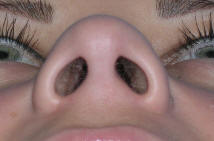
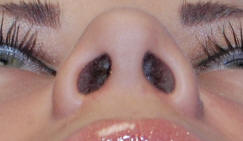
Example of minimal reduction of Alar Base width with internal incisions.
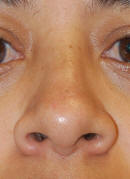
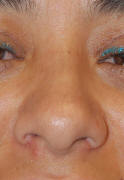
Example of traditional Alar Base reduction with external incisions.
Incisions
Commonly used
terms such as "open
(external)
rhinoplasty" and
"closed (endonasal)
rhinoplasty" have
resulted in some
major debates among
nose surgeons.
 The
term "open"
or external
rhinoplasty refers
to a nasal surgery
that requires an
incision along the
columella (skin in
between the
nostrils) as well as
internal incisions
along the skin and
mucous membrane
inside the nose. "Closed"
or endonasal
rhinoplasty refers
to a nose surgery
preformed only
through incisions
hidden inside the
nostrils. There is
no evidence that one
approach is better
than the other. In
fact, although some
surgeons claim they
"only do closed
rhinoplasty" or vice
versa, rhinoplasty
surgeons should be
well experienced in
both methods, and be
able recommend for
their patients the
approach that would
give them the best
possible result in
that surgeons
experience.
The
term "open"
or external
rhinoplasty refers
to a nasal surgery
that requires an
incision along the
columella (skin in
between the
nostrils) as well as
internal incisions
along the skin and
mucous membrane
inside the nose. "Closed"
or endonasal
rhinoplasty refers
to a nose surgery
preformed only
through incisions
hidden inside the
nostrils. There is
no evidence that one
approach is better
than the other. In
fact, although some
surgeons claim they
"only do closed
rhinoplasty" or vice
versa, rhinoplasty
surgeons should be
well experienced in
both methods, and be
able recommend for
their patients the
approach that would
give them the best
possible result in
that surgeons
experience.
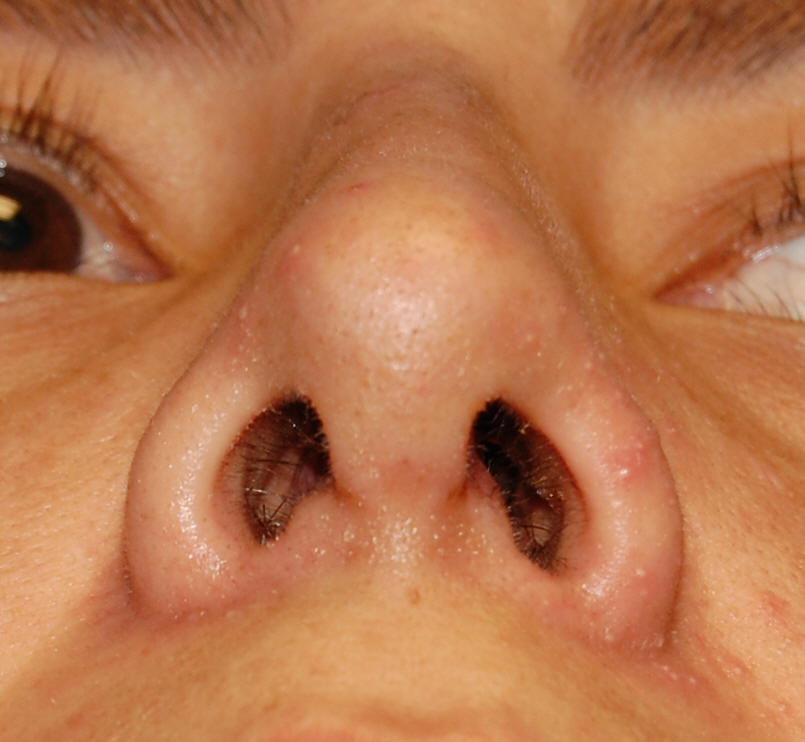
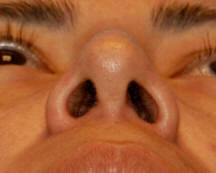
The external incision
in the columella is rarely visible and heals without consequence in
almost all patients. The photos above illustrate the fading of a
typical columellar incision between the 2nd week (left) and 20th week (right)
after surgery.
Internal incisions are
still required and are similar, sometimes identical to the incisions
used for the closed approach.